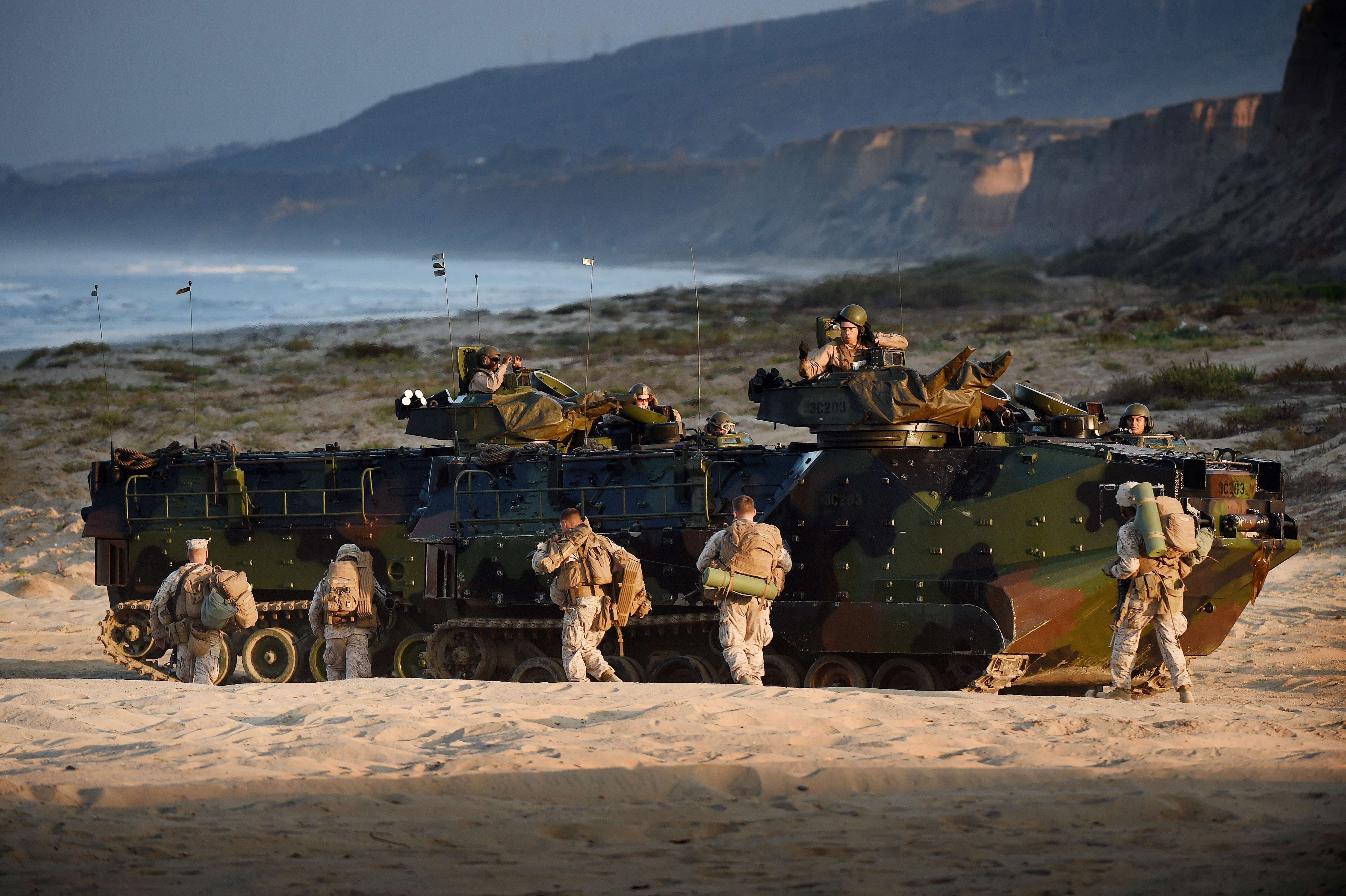The Marine Corps just wrapped a combined exercise between III Marine Expeditionary Force, the 31st Marine Expeditionary Unit and the U.S. 7th Fleet that put to the test the Corps' vision for its future fight against China.
Exercise Noble Fury saw grunts with 1st Battalion, 2nd Marines, capture a small airfield on the island of le Shima, Japan, as part of an expeditionary advanced base operation, or EABO.
The airfield was then used to quickly drop off high mobility rocket systems, or HIMARS, in the middle of the night.
The long range rocket system, destined to replace most M777 howitzers currently used by the Marine Corps, fired a quick notional volley loaded back onto the MC-130Js that dropped them off, and departed the small airfield and moved on to the next mission, a press release said.
The roughly 100 grunts of 1/2 stayed on the expeditionary advanced base, avoiding detection by the enemy and providing key support to the 7th Fleet until the operation moved on. The Marines then took off on CH-53E Super Stallions and prepared to set up the next advanced operation.
The light, quick and powerful operation, alongside close integration with the Navy, is seen by Marine Corps Commandant Gen. David Berger as the key for the Marine Corps' ability to fight China.
RELATED

In Berger’s vision, the Marine Corps will form a skirmish line operating well within range of the Chinese missile defense system, denying the Chinese navy access to the sea while providing close support to the U.S. Navy.
A key to that plan is expeditionary advanced base operations, which would have Marines capture small islands and atolls scattered through the Pacific to set up long range anti-ship missiles, electronic warfare capabilities or even a simple resupply port for the Navy.
“Wherever you see a Marine unit, regardless of that size, you never know what they’re plugged into,” Col. Robert Brodie, the operations officer for III MEF, told reporters at a Thursday evening roundtable. “It could be a bomber overhead, a submarine far away, the ship over the horizon, or a cyber warrior across the globe.”
Noble Fury put to the test how well the Navy and Marine Corps could work together in a scenario that saw the U.S. face off against China.
“The kinds of things we tend to learn consistently, is the challenge of communications, sharing information that is accurate and timely, so that we can make sure that we’re achieving that mission effectively as possible,” Brodie said.
But despite some inclement weather, which forced the planners to work overtime during the training exercise, it was a complete success, Brodie, along with 31st MEU Commander Col. Michael Nakonieczny and Amphibious Squadron 11 Commodore Navy Capt. Richard Lebron, said during Thursday’s media roundtable.
“What we have here is a team that is flexible, capable, creative, and certainly not one that will shy away from the challenges that the environment will present, be that nature made or one that’s man made by an advisory,” Lebron said.
The exercise went beyond testing how lethal the Marine Corps and the Navy could be working together and sought to learn how the Navy could provide shipborne medical aid to Marines taking part of a distributed operation in the Pacific.
In past two decades in Iraq and Afghanistan, the Marine Corps has gotten used to the relatively easy medical access, Berger during the Defense One online expo in September.
But a war with China fought by Marines spread out across thousands of miles will be very different, he warned.
“We’re used to a golden hour, in Afghanistan or Iraq … you get knocked down, you’re shot in the leg, boom, you’re in a level three within 60 minutes,” Berger said in September.
“That’s not reasonable when you’re fighting a distributed fight. So that means we have to have a medical capability more forward than we did before. More distributed has to be the medical capability. We need different medical capability because you may not get to a level three for four hours or four days,” Berger added.
Brodie said one of the key focuses of the exercise was learning how the Corps can improve its immediate casualty care for Marines, along with finding the best way to give Marines access to medical care on ships.
“The first thing that we’re doing is we’ve actually been working with some SOF (special operations forces) organizations that have some higher end capability to do on scene care and sustainment of personnel for casualties support,” Brodie said.
The Navy has “tremendous medical capability of float that we can potentially tie into and get our Marines if they’re established in a ground position in an EAB, back out to the ship for higher end medical care,” he added.
The Marine Corps is currently in “phase III” of force design where it will spend years conducting real-world experiments with the strategies, tactics and force structure it has come up with to face off with China.
The next major experiment will come early next year with Pacific Fury, Brodie said Thursday.
“These exercises provide opportunities for high-end dynamic training, allowing our naval and joint forces to exercise their skills in the littorals as an integrated force,” Vice Adm. Bill Merz, commander of the 7th Fleet, said in an early October press release.
Editor’s note: This story was updated to correct that the Marine Corps fired a notional volley, not a real volley.




